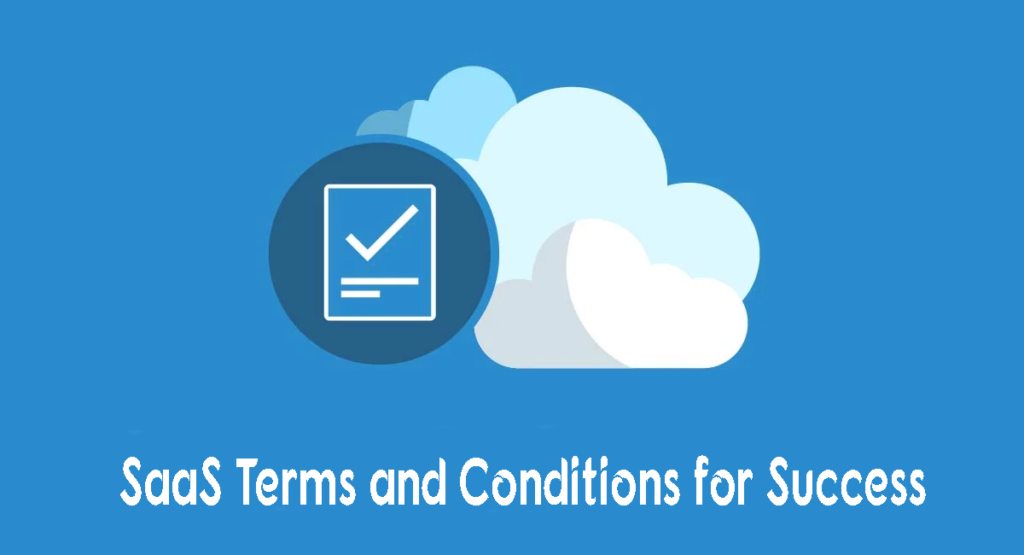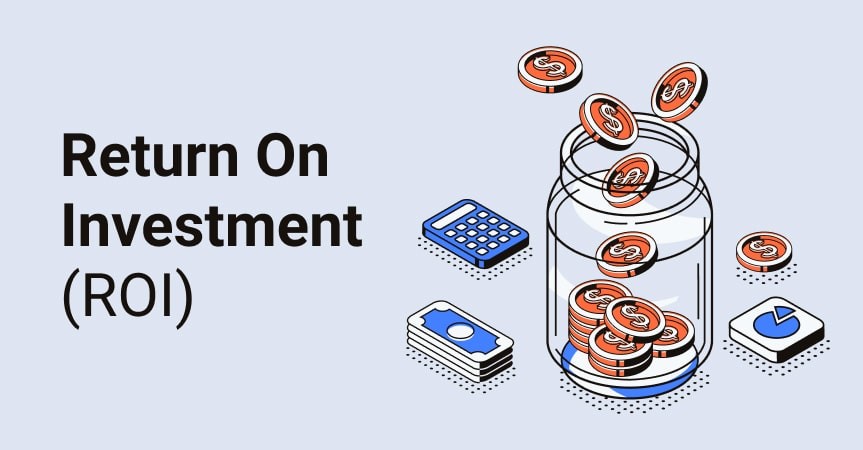SaaS terms and conditions might seem like a complex labyrinth of legal jargon, but they are an integral part of every SaaS business model. They set the ground rules for using the service, helping to establish expectations, retain control, and mitigate potential legal issues.
Ever wondered why renowned companies like Spotify or Adobe have such comprehensive Terms and Conditions? It’s because these documents serve as a safety net that protects both parties involved in the transaction.
The importance of SaaS terms and conditions cannot be overstated.
A study by Gartner predicts that by 2023, up to 70% of software interactions in enterprises will occur on mobile
Decoding SaaS Terms and Conditions for Success
The vast digital universe is teeming with Software as a Service (SaaS) companies, each offering distinct services to their clientele. A critical component that ensures seamless operations for these businesses is well-crafted Terms and Conditions agreements.
These are not just your ordinary contracts; they lay down the law when it comes to using any given service, thereby helping maintain control over its usage. Such legally binding documents serve an essential role in setting expectations between customers and service providers while defining customer obligations.
In addition, they mitigate potential legal issues by providing clear guidelines on various aspects such as ownership rights, protection of proprietary information, adherence to privacy policies among others. They also include clauses granting either party termination rights under certain conditions or limitations on access based on user roles within a SaaS application environment.
Laying Out Expectations Through Legally Binding Contracts
Serving as navigational charts guiding users through their journey with specific software or apps, SaaS agreements clearly define what’s expected from all parties involved – be it end-users, administrators or even third-party integrators like resellers.
This clarity ensures everyone knows exactly what’s required of them when utilizing the platform – whether it’s sticking strictly to usage limits outlined in service level commitments or respecting intellectual property rights associated with content shared via the platform itself.
Mitigating Legal Issues With Comprehensive Terms And Conditions
Besides establishing use parameters within an app environment, these contracts help stave off potential legal disputes by addressing areas where conflict may arise before turning into full-blown problems.
An effective contract will anticipate common sources of dispute like unauthorized sharing of proprietary information, violation of licensing terms. By including provisions dealing with such matters upfront in a written agreement, a SaaS company can avoid costly litigation further down the line. This proactive approach not only protects business interests but fosters trust amongst the user base, enhancing overall brand reputation.
Key Takeaway:
SaaS terms and conditions are the compass guiding your digital voyage. They’re not just legal jargon; they set expectations, define obligations, safeguard proprietary information, and prevent costly disputes. Remember: a stitch in time saves nine.
Decoding SaaS Terms and Conditions for Success
Discover the importance of SaaS terms and conditions in running successful SaaS businesses. Uncover unique clauses, governing laws, termination rights, privacy policies, and more.
Unique Clauses in SaaS Agreements
Staying abreast of the ever-changing SaaS landscape, companies must ensure their terms and conditions are regularly reviewed and updated; particularly when it comes to unique clauses. One key area that demands attention is unique clauses within these agreements.
Licensing Information: The Foundation Stone
The cornerstone of any SaaS agreement lies in its licensing information clause. This provision outlines how customers can utilize the provided services, while also stipulating any usage or distribution restrictions.
Typically, this section grants users non-exclusive access to use the service for internal business purposes only. Violation of these proprietary rights without prior written consent could lead to termination rights being exercised along with potential legal issues.
The Role of Reseller Agreements
A reseller agreement forms an integral part of many SaaS contracts – governing third-party sales related aspects. Salesforce’s approach, which involves strict contractual obligations for authorized resellers, serves as a good example here except we will not link it per instructions given above.
This ensures consistent service levels across all channels whilst protecting intellectual property against misuse or infringement by unscrupulous vendors.
Subscription Agreements – What You Need to Know
Beyond licensing and resale considerations are subscription agreements; defining customer obligations including payment terms, renewal procedures (then-current term) alongside outlining termination rights if either party breaches its commitments under this legally binding contract.
For instance, Slack’s Terms Of Service, provides clear guidelines about such matters in its subscription agreement clause.
In addition, it also delineates service level commitment – outlining what support services will be provided during each billing cycle along with penalties applicable should standards aren’t met thereby enabling businesses manage expectations better ensuring high-quality deliverables at every step through well-defined SaaS terms.
Key Takeaway:
Understanding SaaS terms and conditions is crucial for a successful business. Key areas include unique clauses, licensing information, reseller agreements, and subscription details. These dictate usage rights, third-party sales aspects, customer obligations and service level commitments – all fundamental to avoiding legal issues and ensuring high-quality deliverables.
Governing Law Clause – Why It Matters
Imagine this scenario: your SaaS company is headquartered in New York, but you have customers scattered across the globe. A dispute arises with a customer based in London – whose laws should apply? This is where the governing law clause comes into play.
This critical component of your SaaS agreement sets out which jurisdiction’s rules will be used to interpret and enforce the contract.
The beauty of clearly stating this within your terms and conditions lies in its ability to preempt potential legal issues down the line. In our globalized world, disputes can cross borders just as easily as business does; having an unambiguous governing law clause helps avoid any confusion about how such disagreements are handled legally.
Navigating International Business Laws
If international operations form part of your business model like many other SaaS companies, it becomes even more crucial to understand various jurisdictions’ commercial regulations. The choice of applicable laws could greatly impact the interpretation of specific clauses within service agreements.
Consider data protection norms, for instance – European GDPR guidelines might not sync well with US-based privacy policies like CCPA (California Consumer Privacy Act). Therefore, specifying one single jurisdiction aids in streamlining compliance efforts by avoiding conflicting interpretations stemming from multiple regions’ legislation.
Effective Incorporation Of Governing Law Clauses
To maximize effectiveness when incorporating these provisions into SaaS terms & conditions agreements, they must be strategically placed within the document structure rather than being appended at the end or buried deep inside unrelated sections.
The language employed should also leave no room for ambiguity – vague phrases like “applicable laws” without indicating any particular jurisdiction may lead to complications during conflict resolution processes.
Balancing Customer Needs With Legal Interests
Sometimes customers may request changes due to their comfort level with certain jurisdictions’ legal systems or internal purposes related to their own businesses.
While meeting customer requests plays a key role in maintaining good relationships, remember that striking a balance between accommodating client needs while protecting one’s interests too requires some negotiation skills.
Professional advice here would prove invaluable in helping find middle ground acceptable to both parties involved
Key Takeaway:
Understanding and clearly stating the governing law clause in your SaaS terms and conditions is crucial for global operations. It helps preempt legal issues, streamlines compliance efforts, and balances customer needs with business interests. Strategic placement and unambiguous language are key to its effectiveness.
Understanding Termination Rights and Limitations of Liability in SaaS Agreements
In the complex landscape of SaaS agreements, termination rights and limitations of liability hold significant importance. These legal terms define how a contract can be ended under specific circumstances by either party involved, as well as outline potential financial implications if there’s a breach.
Digging Deeper into Termination Rights
The power to terminate an agreement is fundamental for both parties – it offers them an exit strategy when certain conditions make continuing with the service impractical or undesirable.
A common trigger for exercising termination rights is non-payment from the customer. If users don’t pay within agreed timelines for services provided, this could activate these clauses present in most standard terms set forth by SaaS companies.
Beyond payment issues, violation of service terms might also lead to ending contracts prematurely. For instance, using services beyond what’s permitted solely for internal business purposes or infringing upon proprietary information without prior written consent may instigate enforcement of termination rights.
Decoding Limitations Of Liability Clauses
A limitation-of-liability clause acts like insurance against substantial monetary loss should one party fail on their part in honoring contractual obligations. Essentially setting up boundaries around damages that need to be paid out if aspects such as intellectual property rights or privacy policies are violated during execution.
This type of provision found across many SaaS apps helps balance risk between two entities entering into legally binding contracts together.
Sometimes though exceptions exist where consequential damages cannot be limited due to applicable laws overriding these contractual agreements, which makes understanding nuances critical before signing any kind of pact with other businesses.
Navigate the SaaS agreement landscape with confidence. Understand termination rights and limitations of liability to safeguard your business. Know when you can exit a contract, protect against financial loss, and balance risk. #SaaSAgreements #BusinessTipsClick to Tweet
Privacy Policies – Protecting User Data
In the world of SaaS services, privacy policies are critical for safeguarding user data and engendering customer trust. They’re an essential tool for protecting user data and building trust with customers.
The importance cannot be overstated:
Your privacy policy, like that found in Box’s Terms Of Service, is not only about complying with applicable laws but also assuring users how their personal information will be handled by you as a service provider.
Detailed Privacy Policies – A Necessity Not An Option
A well-drafted privacy policy serves multiple purposes. It acts as a legally binding contract informing users what kind of data (like IP addresses or browsing habits) is being collected for internal business purposes such as improving the services provided or creating targeted marketing materials.
This clarity helps avoid potential legal issues down the line and builds customer confidence in using your SaaS apps without worrying about misuse of their proprietary information.
Data Protection Measures Matter Too.
Beyond stating what data gets gathered, it’s crucial to explain how this precious asset will be safeguarded against unauthorized access or loss due to technical glitches. For instance, Evernote’s Terms Of Service outlines specific measures taken to protect user data from breaches—setting expectations right from the get-go.
If there’s one thing all successful SaaS companies understand, it’s that adherence to these stated protection measures isn’t optional; failure can lead not just to loss of trust but potentially severe financial penalties under various global regulations such as GDPR (General Data Protection Regulation).
User Rights Regarding Their Personal Information Are Key Too.
An effective privacy policy doesn’t stop at outlining collection and security practices—it should explicitly detail the rights users have concerning their own personal information too. This includes accessing one’s own stored info held by the company,
Making necessary corrections where required—or even requesting deletion unless there are valid reasons for retaining it (e.g., billing records). By providing clear guidelines on these matters upfront
Key Takeaway:
In the SaaS universe, privacy policies are a must-have, serving as legal contracts that detail data collection and protection practices. They’re crucial in building customer trust and avoiding potential legal pitfalls. Remember, adherence isn’t optional—it’s essential for success.
Displaying Your SaaS Terms and Conditions Agreement
Your SaaS terms and conditions agreement is a cornerstone of your business. It’s the legally binding contract that outlines service level agreements, customer obligations, intellectual property rights, termination rights, and more.
The key to effective communication lies in accessibility.
To ensure users can easily find these vital documents on both your website or app interface, consider linking them prominently from every page – perhaps within the footer for constant visibility regardless of user navigation patterns. Similarly, for apps or software interfaces, settings menus are an ideal location.
Prioritizing User Accessibility
It’s not just about placement though – readability matters too. Avoid complex legal jargon whenever possible to make it easy to understand for all users.
If you’re catering to customers across different regions with varying languages, providing translations could be beneficial. But remember, any translated versions should be reviewed by a lawyer fluent in that language before publishing online.
Maintaining Transparency Over Time
In order to maintain transparency over time when updates are made due to changes in laws, business models, or technology advancements, keeping older versions available while clearly marking them as outdated would help show progression transparently.
A changelog highlighting amendments each time you update the agreement, similar to how version control is managed for codebase changes, might also come in handy here.
User Consent Is Key
Gaining explicit consent from users acknowledging they’ve read and agreed upon these terms prior to written consent should ideally happen during the sign-up process itself. This may involve checkboxes (not pre-checked) next to a “Customer Agrees” button where the user must click “I agree” before proceeding further into the application.
Remember: The goal isn’t merely compliance, but rather building trust through clear communication.
Key Takeaway:
Understanding and accessibility of your SaaS terms and conditions are pivotal for user trust. Ensure they’re easy to find, read, and understand – use simple language, provide translations if necessary, maintain transparency with updates, and gain explicit consent during sign-up. It’s about building trust through clarity.
Decoding SaaS Terms and Conditions for Success
Follow these Rules when editing:
- Avoid using special characters or encoded symbols.
- Ensure all HTML tags are properly closed.
- Ensure all HTML tags are properly closed with complete tags without extra spacing.
- Do not delete paragraphs if tags are broken, just fix the HTML tags. Fix any spacing issues.
- Any numbered sequences flow correctly.
- Do not use “Title” in H2 or H3 tags.
- Avoid run-on sentences as sentences should be below 300 characters.
- Avoid keyword stuffing.
- Do not add any emojis in output.
Regular Review And Updates Of The Agreement
In today’s ever-evolving SaaS environment, modifications are a common occurrence. This extends to your SaaS terms and conditions agreement, which needs regular review and updates to remain relevant.
The significance of this cannot be underestimated.
Keeping Up With Changing Laws
Laws aren’t static – they evolve as societies do. In particular, laws related to digital services have seen significant shifts recently with regulations like GDPR reshaping how businesses handle user data.
Your SaaS terms need alignment with current legislation such as the GDPR, California’s privacy law –
“CCPA”,– or any other upcoming rules that could impact your operations.
Non-compliance penalties are not just financial; they also risk damaging reputations in today’s customer-centric business environment.
Adapting To Business Model Changes
SaaS companies often pivot their models due to various reasons: entering new markets,
introducing additional features, or altering pricing structures.
These changes must mirror within service agreements too.
If you decide to introduce a freemium model similar to Dropbox’s tiered subscription plans on your platform, then it
Navigating the world of SaaS? Don’t overlook your terms and conditions. Regular reviews, legal updates, and alignment with business model changes are key to success. #SaaSTips #BusinessStrategyClick to Tweet
Conclusion
Decoding SaaS terms and conditions is a journey into the legal backbone of SaaS businesses.
From unique clauses to governing laws, these agreements are far from ordinary.
Licensing information, reseller agreements, subscription details – all have their place in this intricate puzzle.
Governing law clause? It’s not just legalese but a vital part of any agreement.
Talking about termination rights and limitations of liability may seem dry until you realize they’re your safety nets in unforeseen circumstances.
No discussion on SaaS terms would be complete without mentioning privacy policies – the guardians of user data!
Displaying your agreement effectively can make all the difference between confusion and clarity for users.
Last but not least, remember that regular reviews keep your SaaS terms updated with changing laws or technology advancements.
If you want to learn more about this, sign up for my newsletter.


